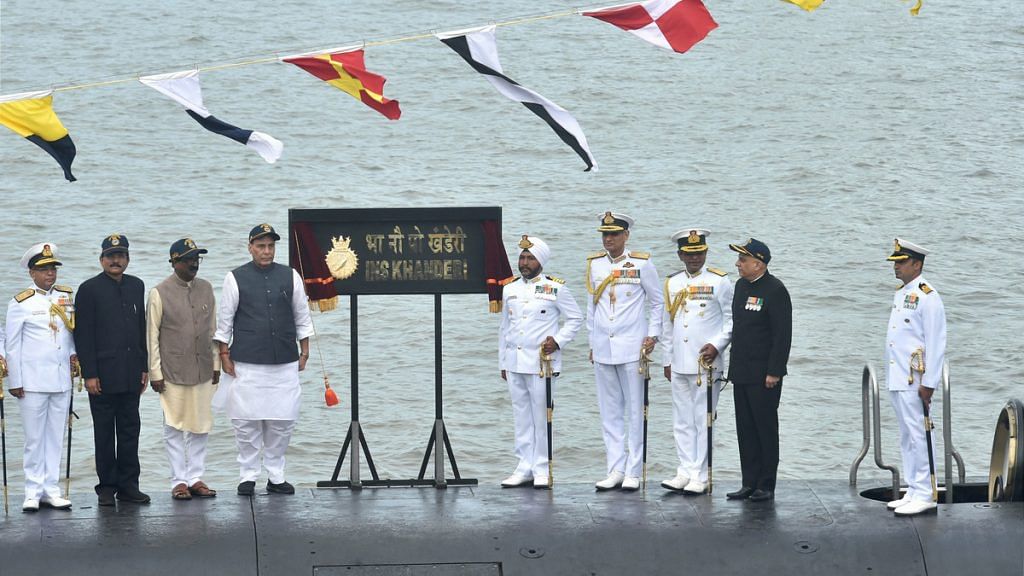New Delhi: Defence Minister Rajnath Singh commissioned India’s second indigenously-built Scorpene-class submarine — INS Khanderi — into the Indian Navy Saturday, at a ceremony held at Mazagon Docks in Mumbai.
“Pakistan should understand that today with the strong resolve of our government and advancement in naval capacity with additions like INS Khanderi, we are capable of giving a much bigger blow to it,” Singh said at the event.
INS Khanderi is a diesel-electric submarine designed by French company DCNS and was being manufactured at Mazagon Dock in Mumbai, as part of Project 75 of the Indian Navy.
The construction of the submarine began in April 2009 and was constructed in five separate segments, which were welded later. It was launched into the waters in January 2017.
Under Project 75, India will be building six Scorpene-class submarines at a cost of Rs 25,000 crore. The first of the class, INS Kalvari, was commissioned in December 2017. The remaining four submarines in the Scorpene-class include Karanj, Vela, Vagir and Vagsheer.
The features of the Scorpene-class submarine include stealth and a superior ability to attack the enemy using precision guided weapons.
Also read: After UN speech, Rajnath Singh says Imran Khan inspiring cartoonists by going door to door
Its features
INS Khanderi will be able to undertake missions like anti-surface warfare, anti-submarine warfare, intelligence gathering, surveillance and mine-laying.
The submarine carried forward the legacy of the first INS Khanderi, a Soviet Foxtrot Class, which was India’s second submarine overall. The first INS Khanderi was in service of the Indian Navy for 21 years. It was decommissioned in 1989.
INS Khanderi has an overall length of 67.5 metres and a height of about 12.3 metres.
The hull form, the fin and the hydroplanes of the submarine are designed to ensure minimum underwater resistance. The power of the submarine’s motor is provided by 360 battery cells — each weighing 750 kg. It’s Permanently Magnetised Propulsion Motor is silent in nature, ensuring its stealth in the sea.
The stealth of the INS Khanderi is further enhanced through the mounting of equipment inside the pressure hull on shock absorbing cradles.
The submarine is equipped with a set of missiles and torpedoes, which can be fired on detecting enemy targets. It has a sonar suite that enables long-range detection and classification of targets and its warfare capability comprises a cluster of integrated advanced weapons and sensors.
It has undertaken multiple torpedo and missile firing trials to validate its fighting capability. The submarine can operate from under a depth of 300 meters and can travel over 1,000 km underwater. It can carry 18 torpedoes and tube-launched anti-ship missiles.
Another feature of the new submarine is that unlike previous requirement of 60 crew, its maximum requirement is 36 crew.
Khanderi is inspired by the fish Kanneri found in the Arabian sea, which is very well known for hunting while swimming close to the bottom of the ocean.
Khanderi was also the name of Maratha king Shivaji’s island fort.
